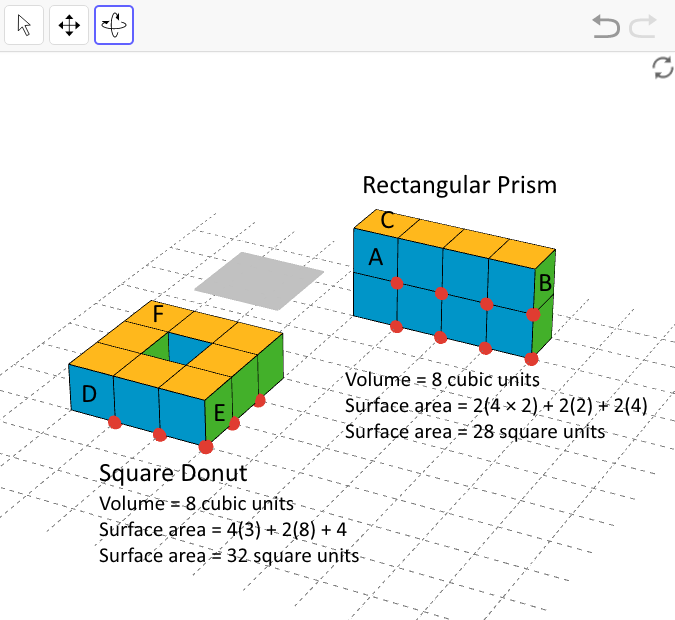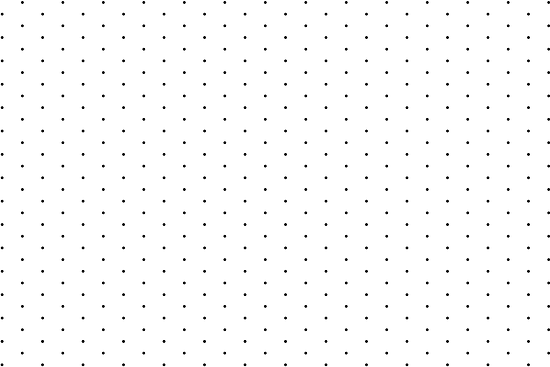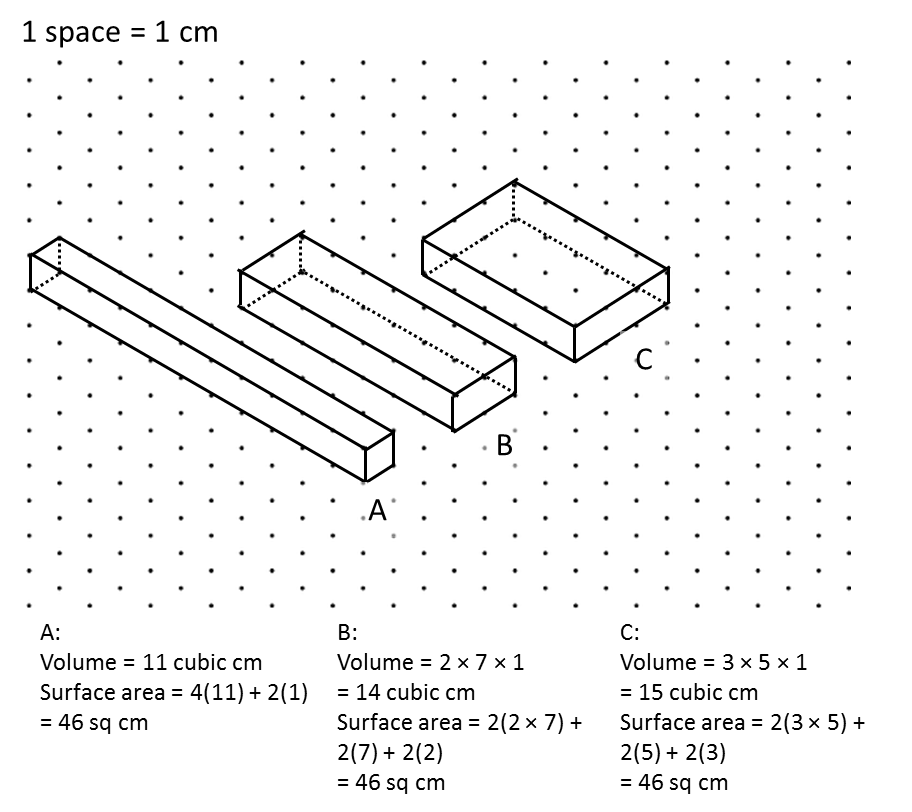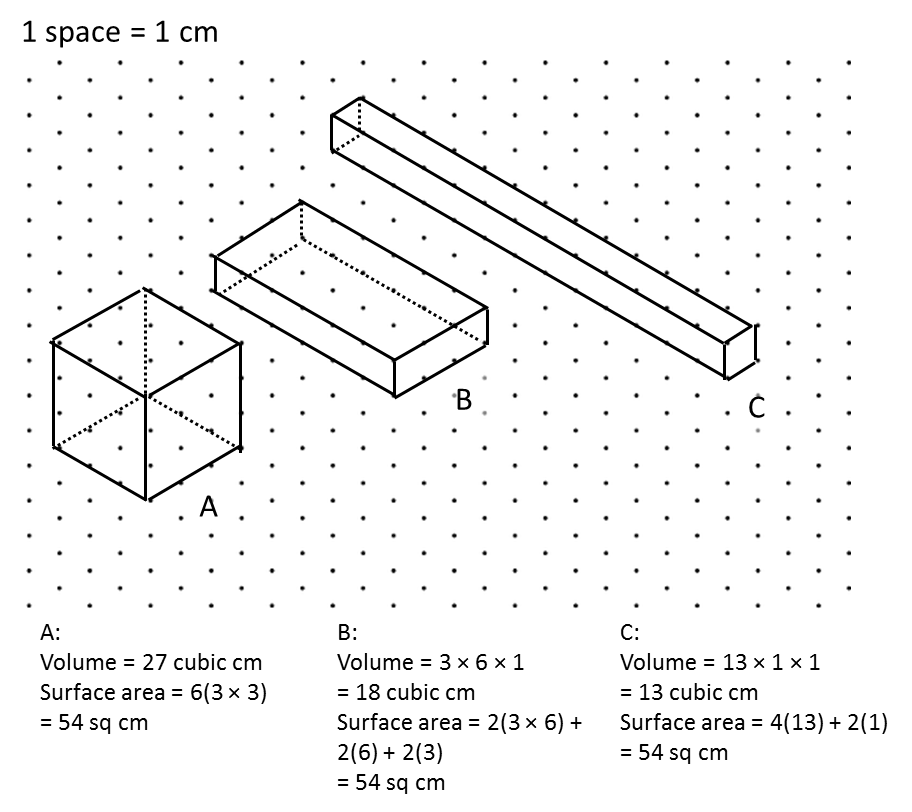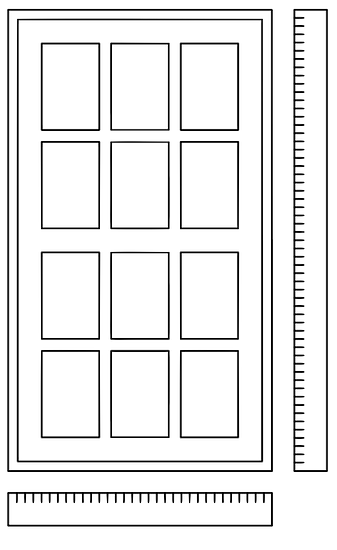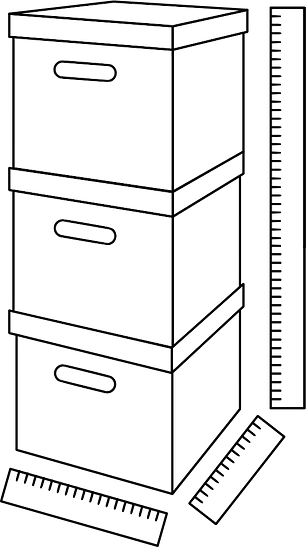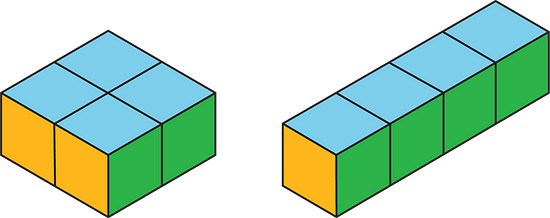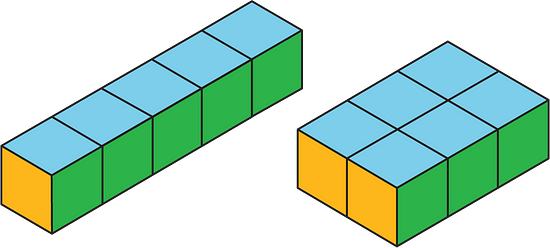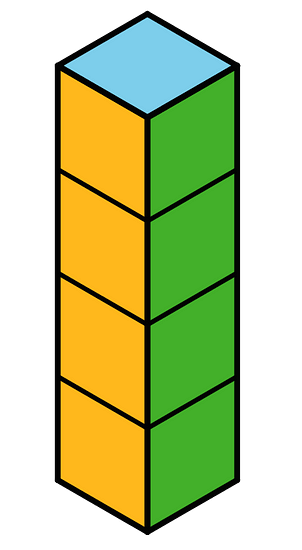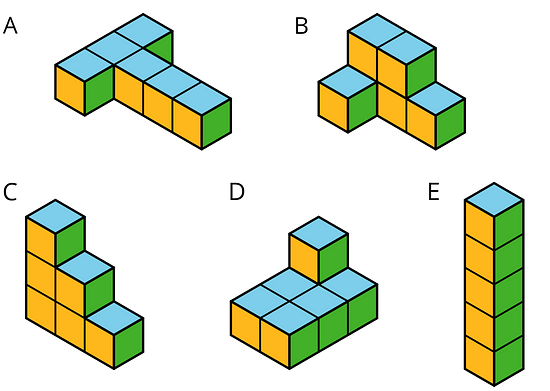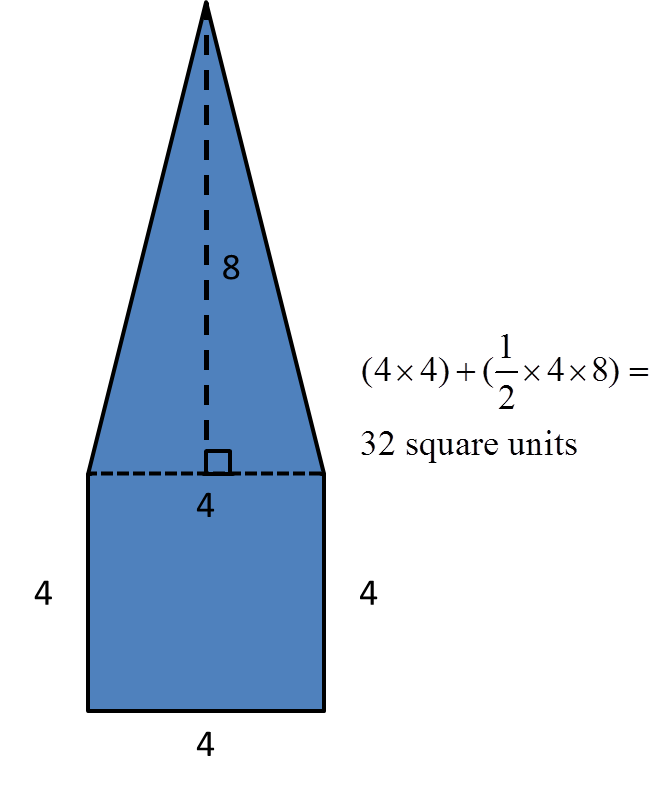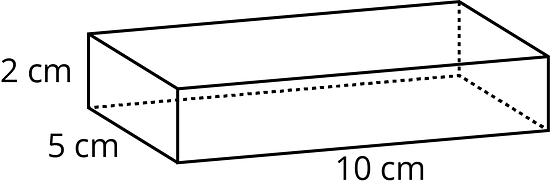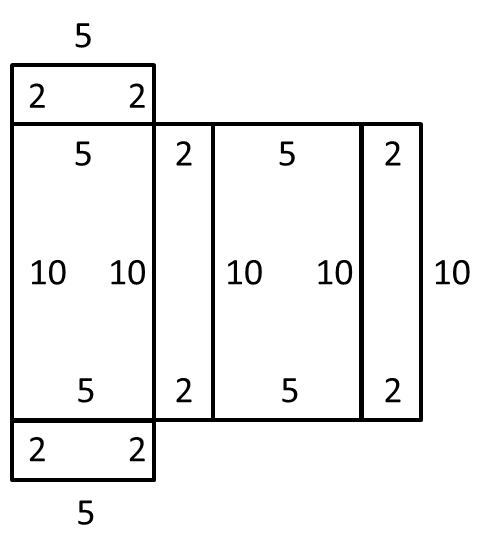

Illustrative Mathematics Unit 6.1, Lesson 16: Distinguishing Between Surface Area and Volume
Related Topics:
Math Worksheets
Learn more about the contrast between surface area and volume of three-dimensional shapes, and about the differences between one-, two-, and three-dimensional measurements and units. After trying the questions, click on the buttons to view answers and explanations in text or video.
Return to the list of Illustrative Math lessons
Distinguishing Between Surface Area and Volume
Let’s contrast surface area and volume.
Illustrative Math Unit 6.1, Lesson 16 (printable worksheets)
16.1 - Attributes and Their Measures
For each quantity, choose one or more appropriate units of measurement.
For the last two rows, think of a quantity that could be appropriately measured with the given units.
Quantities:
- Perimeter of a parking lot:
- Volume of a semi truck:
- Surface area of a refrigerator:
- Length of an eyelash:
- Area of a state:
- Volume of an ocean:
- ______________________________: miles
- ______________________________: cubic meters
Units:
- millimeters (mm)
- feet (ft)
- meters (m)
- square inches (sq in)
- square feet (sq ft)
- square miles (sq mi)
- cubic kilometers (cu km)
- cubic yards (cu yd)
16.2 - Building with 8 Cubes
Open the applet. Drag on the red point on the cube to move it, and click on the point to switch between vertical and horizontal movement. The gray square will give you 16 cubes. Build 2 different shapes using 8 cubes for each.
For each shape, determine the following information and write it down:
Give a name or a label (e.g., Mae’s First Shape or Eric’s Steps).
Determine its volume.
Determine its surface area.
16.3 - Comparing Prisms Without Building Them
Three rectangular prisms each have a height of 1 cm.
Prism A has a base that is 1 cm by 11 cm.
Prism B has a base that is 2 cm by 7 cm.
Prism C has a base that is 3 cm by 5 cm.
1. Find the surface area and volume of each prism. Use the dot paper to draw the prisms, if needed.
2. Analyze the volumes and surface areas of the prisms. What do you notice? Write 1–2 observations about them.
Can you find more examples of prisms that have the same surface areas but different volumes? How many can you find?
Lesson 16 Summary
Length is a one-dimensional attribute of a geometric figure. We measure lengths using units like millimeters, centimeters, meters, kilometers, inches, feet, yards, and miles.
Area is a two-dimensional attribute. We measure area in square units. For example, a square that is 1 centimeter on each side has an area of 1 square centimeter.
Volume is a three-dimensional attribute. We measure volume in cubic units. For example, a cube that is 1 kilometer on each side has a volume of 1 cubic kilometer.
Surface area and volume are different attributes of three-dimensional figures. Surface area is a two-dimensional measure, while volume is a three-dimensional measure.
Two figures can have the same volume but different surface areas. For example:
A rectangular prism with side lengths of 1 cm, 2 cm, and 2 cm has a volume of 4 cu cm and a surface area of 16 sq cm.
A rectangular prism with side lengths of 1 cm, 1 cm, and 4 cm has the same volume but a surface area of 18 sq cm.
Similarly, two figures can have the same surface area but different volumes.
A rectangular prism with side lengths of 1 cm, 1 cm, and 5 cm has a surface area of 22 sq cm and a volume of 5 cu cm.
A rectangular prism with side lengths of 1 cm, 2 cm, and 3 cm has the same surface area but a volume of 6 cu cm.
Practice Problems
1. Match each quantity with an appropriate unit of measurement.
- The surface area of a tissue box
- The amount of soil in a planter box
- The area of a parking lot
- The length of a soccer field
- The volume of a fish tank
- Square meters
- Yards
- Cubic inches
- Cubic feet
- Square centimeters
2. Here is a figure built from snap cubes.
a. Find the volume of the figure in cubic units.
b. Find the surface area of the figure in square units.
c. True or false: If we double the number of cubes being stacked, both the volume and surface area will double. Explain or show how you know.
3. Lin said, "Two figures with the same volume also have the same surface area."
a. Which two figures suggest that her statement is true?
b. Which two figures could show that her statement is not true?
4. Draw a pentagon (five-sided polygon) that has an area of 32 square units. Label all relevant sides or segments with their measurements, and show that the area is 32 square units.
5. a. Draw a net for this rectangular prism.
b. Find the surface area of the rectangular prism.
The Open Up Resources math curriculum is free to download from the Open Up Resources website and is also available from Illustrative Mathematics.
Try the free Mathway calculator and
problem solver below to practice various math topics. Try the given examples, or type in your own
problem and check your answer with the step-by-step explanations.



We welcome your feedback, comments and questions about this site or page. Please submit your feedback or enquiries via our Feedback page.
